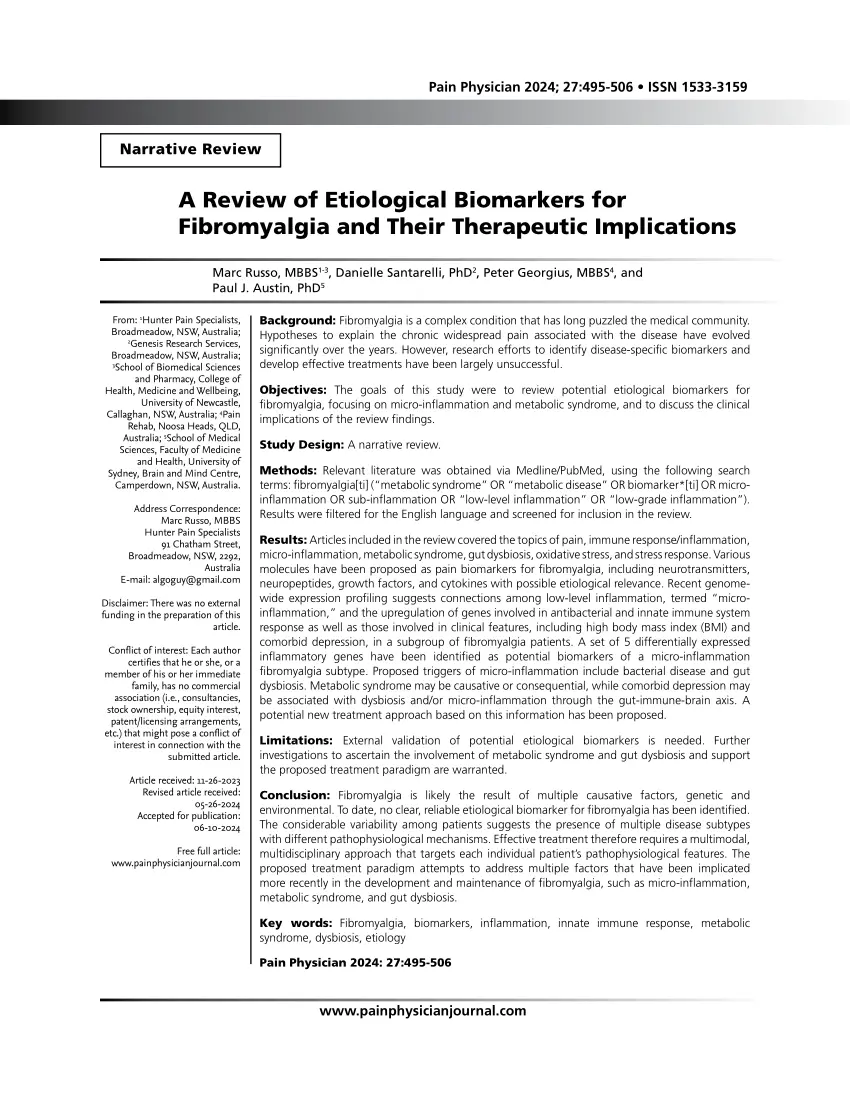Fibromyalgia is increasingly studied as a complex biological condition rather than a single-system disorder. Instead of searching for one “cause,” scientists are investigating how genetic predisposition, epigenetic regulation, and environmental influences interact at the molecular level.
This new perspective places fibromyalgia within the field of molecular biology, where DNA, RNA, and proteins form a highly connected network controlling how the body responds to stress, pain, and fatigue.
Understanding the Genetic Landscape
Scientific research has revealed that some individuals may have genetic variations that affect how their nervous system processes pain signals or stress.
Genes related to serotonin transport (SLC6A4), dopamine receptors, and stress-response pathways (COMT, MAO-A) are among the most studied.
These genes do not “cause” fibromyalgia directly. Instead, they may influence biological sensitivity, such as how the body reacts to environmental stressors, hormonal changes, or immune activity.
This means that genetics provides a foundation, while other layers such as epigenetic and environmental factors shape the overall biological response. Read more
The Role of Epigenetics: Beyond DNA Sequences
The field of epigenetics explores how external and internal factors can regulate gene activity without changing the DNA sequence.
In fibromyalgia research, this has become a key area of focus. Epigenetic changes can determine which genes are active or silent in nerve cells, muscle tissues, and immune pathways.
🔹 DNA Methylation
DNA methylation involves adding small chemical groups (methyl groups) to the DNA molecule. Studies suggest altered methylation patterns in genes linked to pain signaling, stress regulation, and neuroinflammation in fibromyalgia. Read more
These modifications may affect how the nervous system interprets sensory information and stress responses.
 Source : ResearchGate
Source : ResearchGate
Link : URL of this article


🔹 Histone Modifications
Histones are proteins that package DNA into chromatin. When histones are chemically modified through acetylation, methylation, or phosphorylation they can alter how tightly DNA is wound, influencing whether certain genes are expressed or suppressed.
Researchers using ChIP-Seq (Chromatin Immunoprecipitation Sequencing) have found that histone modifications can regulate genes involved in immune signaling and energy metabolism, two systems often discussed in fibromyalgia biology. Read more
Environmental and Stress-Regulated Gene Activity
Environmental factors such as chronic stress, sleep patterns, physical activity, and psychosocial environment can interact with the genome to influence biological processes.
This interaction is sometimes described as a “gene-environment dialogue.”
In fibromyalgia, chronic stress exposure may trigger biochemical pathways involving cortisol regulation and neuroendocrine signaling.
These pathways, when activated over long periods, can influence gene expression in tissues related to pain processing and energy metabolism.
Scientists studying RNA-Seq data have found subtle differences in gene expression profiles among fibromyalgia research groups, highlighting how molecular responses vary from person to person.
Global Research in Molecular Fibromyalgia
Across international research centers, scientists are integrating genomic, epigenomic, and metabolomic data to build a comprehensive map of fibromyalgia biology.
These studies combine laboratory analysis (ELISA, ChIP-Seq, RNA-Seq) with advanced bioinformatics to identify shared biological pathways.
Collaborations in Europe, North America, and Asia aim to create molecular databases that support precision-based approaches to understanding chronic pain and fatigue biology.
Molecular Level | Biological focus | Research Techniques |
Genetics | Variations in pain and stress-related genes | DNA sequencing , GWAS |
Epigentics | DNA methylation and histone modification regulating gene expression | ChIP-Seq , bisulfite sequencing |
Gene Expression | How stress and envionrment infulence active genes | RNA-seq , transcriptomics |
Systems Biology | Integration of genomic and molecular data | Multi-omics,Bioinformatics |
The Future of Fibromyalgia Molecular Science
Fibromyalgia research is shifting toward a multi-dimensional biological model that includes genetics, epigenetics, and environmental feedback loops.
By decoding how these systems interact, scientists aim to gain a deeper understanding of human pain biology and molecular adaptation to stress.
This evolving field reflects the power of molecular science in uncovering how genes and environments cooperate to shape complex biological conditions.

